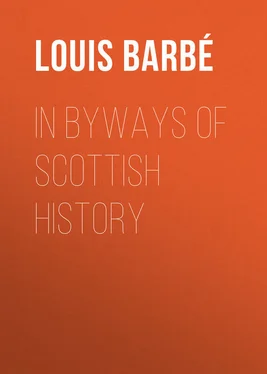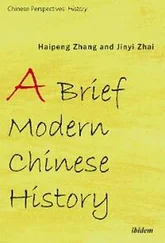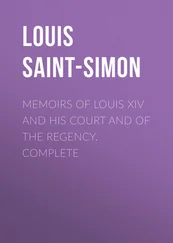Louis Barbé - In Byways of Scottish History
Здесь есть возможность читать онлайн «Louis Barbé - In Byways of Scottish History» — ознакомительный отрывок электронной книги совершенно бесплатно, а после прочтения отрывка купить полную версию. В некоторых случаях можно слушать аудио, скачать через торрент в формате fb2 и присутствует краткое содержание. Жанр: foreign_antique, foreign_prose, на английском языке. Описание произведения, (предисловие) а так же отзывы посетителей доступны на портале библиотеки ЛибКат.
- Название:In Byways of Scottish History
- Автор:
- Жанр:
- Год:неизвестен
- ISBN:нет данных
- Рейтинг книги:4 / 5. Голосов: 1
-
Избранное:Добавить в избранное
- Отзывы:
-
Ваша оценка:
- 80
- 1
- 2
- 3
- 4
- 5
In Byways of Scottish History: краткое содержание, описание и аннотация
Предлагаем к чтению аннотацию, описание, краткое содержание или предисловие (зависит от того, что написал сам автор книги «In Byways of Scottish History»). Если вы не нашли необходимую информацию о книге — напишите в комментариях, мы постараемся отыскать её.
In Byways of Scottish History — читать онлайн ознакомительный отрывок
Ниже представлен текст книги, разбитый по страницам. Система сохранения места последней прочитанной страницы, позволяет с удобством читать онлайн бесплатно книгу «In Byways of Scottish History», без необходимости каждый раз заново искать на чём Вы остановились. Поставьте закладку, и сможете в любой момент перейти на страницу, на которой закончили чтение.
Интервал:
Закладка:
Amongst the various festivities and celebrations which were revived in Holyrood by Mary and the suite which she had brought with her from the gay court of France, that of Twelfth Night seems to have been in high favour, as, indeed, it still is in some provinces of France at the present day. In the "gâteau des Rois", or Twelfth Night Cake, it was customary to hide a bean, and when the cake was cut up and distributed, the person to whom chance – or not infrequently design – brought the piece containing the bean, was recognized sole monarch of the revels until the stroke of midnight. On the 6th of January, 1563, Mary Fleming was elected queen by favour of the bean. Her mistress, entering into the spirit of the festivities, with her characteristic considerateness for even the amusement of those about her, abdicated her state in favour of the mimic monarch of the night. A letter written by Randolph to Lord Dudley, and bearing the date of the 15th of January, gives an interesting and vivid picture of the fair maid of honour decked out in her royal mistress's jewels: "You should have seen here upon Tuesday the great solemnity and royall estate of the Queen of the Beene. Fortune was so favourable to faire Flemyng, that, if shee could have seen to have judged of her vertue and beauty, as blindly she went to work and chose her at adventure, shee would sooner have made her Queen for ever, then for one night only, to exalt her so high and the nixt to leave her in the state she found her… That day yt was to be seen, by her princely pomp, how fite a match she would be, wer she to contend ether with Venus in beauty, Minerva in witt, or Juno in worldly wealth, haveing the two former by nature, and of the third so much as is contained in this realme at her command and free disposition. The treasure of Solomon, I trowe, was not to be compared unto that which hanged upon her back… The Queen of the Beene was in a gowne of cloath of silver; her head, her neck, her shoulders, the rest of her whole body, so besett with stones, that more in our whole jewell house wer not to be found. The Queen herself was apparelled in collours whyt and black, no other jewell or gold about her bot the ring that I brought her from the Queen's Majestie hanging at her breast, with a lace of whyt and black about her neck." In another part of the same letter the writer becomes even more enthusiastic: "Happy was it unto this realm," he says, "that her reign endured no longer. Two such nights in one state, in so good accord, I believe was never seen, as to behold two worthy queens possess, without envy, one kingdom, both upon a day. I leave the rest to your lordship to be judged of. My pen staggereth, my hand faileth, further to write… The cheer was great. I never found myself so happy, nor so well treated, until that it came to the point that the old queen herself, to show her mighty power, contrary unto the assurance granted me by the younger queen, drew me into the dance, which part of the play I could with good will have spared to your lordship, as much fitter for the purpose." 59
The queen of this Twelfth-Tide pageant was also celebrated by the court poet Buchanan. Amongst his epigrams there is one bearing the title: "Ad Mariam Flaminiam sorte Reginam":
Could worth or high descent a crown bestow,
Thou hadst been Queen, fair Fleming, long ago;
Were grace and beauty titles to the throne,
No grace or beauty had outshone thine own;
Did vows of mortal men avail with Fate,
Our vows had raised thee to the royal state.
The fickle Deity that rules mankind,
Though blind and deaf and foolish in her mind,
Seemed neither foolish, deaf, nor blind to be
When regal honours she accorded thee;
Or, if she were, then 'twas by Virtue led
She placed the diadem upon thy head. 60
The "Faire Flemyng" found an admirer amongst the English gentlemen whom political business had brought to the Scotch Court. This was Sir Henry Sidney, of whom Naunton reports that he was a statesman "of great parts". As Sir Henry was born in 1519, and consequently over twenty years older than the youthful maid of honour, his choice cannot be considered to have been a very judicious one, nor can the ill-success of his suit appear greatly astonishing. And yet, as the sequel was to show, Mary Fleming had no insuperable objection to an advantageous match on the score of disparity of age. In the year following that in which she figured as Queen of the Bean at Holyrood, the gossiping correspondence of the time expatiates irreverently enough on Secretary Maitland's wooing of the maid of honour. He was about forty at the time, and it was not very long since his first wife, Janet Monteith, had died. Mary Fleming was about two-and-twenty. There was, consequently, some show of reason for the remark made by Kirkcaldy of Grange, in communicating to Randolph the new matrimonial project in which Maitland was embarked: "The Secretary's wife is dead, and he is a suitor to Mary Fleming, who is as meet for him as I am to be a page". 61Cecil appears to have been taken into the Laird of Lethington's confidence, and doubtless found amusement in the enamoured statesman's extravagance. "The common affairs do never so much trouble me but that at least I have one merry hour of the four-and-twenty… Those that be in love are ever set upon a merry pin; yet I take this to be a most singular remedy for all diseases in all persons." 62Two of the keenest politicians of their age laying aside their diplomatic gravity and forgetting the jealousies and the rivalry of their respective courts to discuss the charms of the Queen's youthful maid of honour: it is a charming historical vignette not without interest and humour even at this length of time. We may judge to what extent the Secretary was "set on a merry pin", from Randolph's description of the courtship. In a letter dated 31 March, 1565, and addressed to Sir Henry Sidney, Mary Fleming's old admirer, he writes: "She neither remembereth you, nor scarcely acknowledgeth that you are her man. Your lordship, therefore, need not to pride you of any such mistress in this court; she hath found another whom she doth love better. Lethington now serveth her alone, and is like, for her sake, to run beside himself. Both night and day he attendeth, he watcheth, he wooeth – his folly never more apparent than in loving her, where he may be assured that, how much soever he make of her, she will always love another better. This much I have written for the worthy praise of your noble mistress, who, now being neither much worth in beauty, nor greatly to be praised in virtue, is content, in place of lords and earls, to accept to her service a poor pen clerk." 63We have not to reconcile the ill-natured and slanderous remarks of Randolph's letter with the glowing panegyric penned by him some two years previously. That he intended to comfort the rejected suitor, and to tone down the disappointment and the jealousy which he might feel at the success of a rival not greatly younger than himself, would be too charitable a supposition. It is not improbable that he may have had more personal reasons for his spite, and that when, in the same letter, he describes "Fleming that once was so fair", wishing "with many a sigh that Randolph had served her", he is giving a distorted and unscrupulous version of an episode not unlike that between Mary Fleming and Sir Henry himself. To give even the not very high-minded Randolph his due, however, it is but fair to add that his later letters, whilst fully bearing out what he had previously stated with regard to Maitland's lovemaking, throw no doubt on Mary's sincerity: "Lethington hath now leave and time to court his mistress, Mary Fleming"; 64and, again, "My old friend, Lethington, hath leisure to make love; and, in the end, I believe, as wise as he is, will show himself a very fool, or stark, staring mad". 65This "leisure to make love" is attributed to Rizzio, then in high favour with the Queen. This was about the end of 1565. Early in 1566, however, the unfortunate Italian was murdered under circumstances too familiar to need repetition, and for his share in the unwarrantable transaction, Secretary Maitland was banished from the royal presence. The lovers were, in consequence, parted for some six months, from March to September. It was about this time that Queen Mary, dreading the hour of her approaching travail, and haunted by a presentiment that it would prove fatal to her, caused inventories of her private effects to be drawn up, and made legacies to her personal friends and attendants. The four Marys were not forgotten. They were each to receive a diamond; "Aux quatre Maries, quatre autres petis diamants de diverse façon", 66besides a portion of the Queen's needlework and linen: "tous mes ouurasges, manches et collets aux quatre Maries". 67In addition to this, there was set down for "Flamy", two pieces of gold lace with ornaments of white and red enamel, a dress, a necklace, and a chain to be used as a girdle. We may infer that red and white were the maid of honour's favourite colours, for "blancq et rouge" appear in some form or another in all the items of the intended legacy. 68
Читать дальшеИнтервал:
Закладка:
Похожие книги на «In Byways of Scottish History»
Представляем Вашему вниманию похожие книги на «In Byways of Scottish History» списком для выбора. Мы отобрали схожую по названию и смыслу литературу в надежде предоставить читателям больше вариантов отыскать новые, интересные, ещё непрочитанные произведения.
Обсуждение, отзывы о книге «In Byways of Scottish History» и просто собственные мнения читателей. Оставьте ваши комментарии, напишите, что Вы думаете о произведении, его смысле или главных героях. Укажите что конкретно понравилось, а что нет, и почему Вы так считаете.












